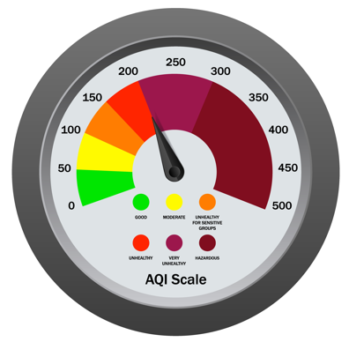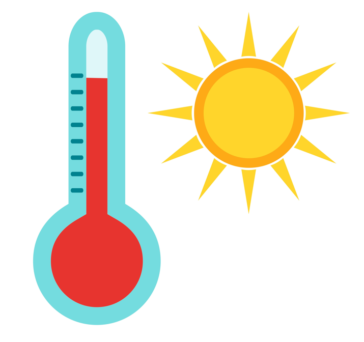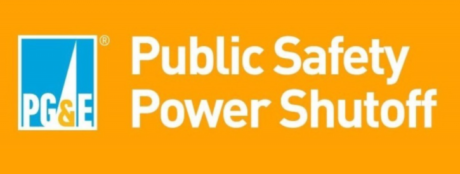School safety is a priority for our schools, so we want to share what we do when we receive information that threatens the safety of our students or staff and what we can all do to make our schools safer.
All our school sites are equipped with a Visitor Management System and a Video Entry Camera System to monitor and track all visitors during the school day. Gates are locked during school hours, and all visitors and volunteers must sign in at the school office.
We also conduct regular drills and provide our sites with feedback to continually improve our safety practices. Our teachers ensure that safety drills and protocols are understood and followed by students. Our staff, including administrators, are trained in school safety protocols and keep up-to-date on safety measures. They also encourage open communication with students and parents regarding any safety concerns and follow-up when necessary.
SLUSD investigates all reported threats or safety concerns and communicates with parents as much information as is reasonable while respecting privacy policies. We believe in maintaining strong two-way communication with parents and expect them to report any threat of harm toward students to the school or law enforcement. It’s crucial that we all understand and educate students about the seriousness of threats and inappropriate remarks in a school setting.
Our primary concern is the safety and well-being of our students, and we are committed to creating the safest possible schools. We believe that working together as a community and maintaining open communication is essential to achieving this goal.
Click here for the San Leandro Unified Emergency Operations Plan.
How parents can be most helpful in an emergency situation:
If a potentially threatening situation or an emergency occurs on a school campus, for the safety of your students, we request parents to PLEASE:
- Remain as calm as possible.
- Do not attempt to go to school. Access routes and streets need to be clear for emergency vehicles. Traffic congestion will make the response difficult for first responders. Parents or community members who try to make it to the school put everyone at greater risk, including themselves and their students.
- Remain at home or at work to make it easier for officials to contact you should this be necessary. If schools need to evacuate students off-site, you will be given information through the district communication channels as to where and when to pick up your student.
- Do not call students on their cell phones. In some situations, students must maintain silence so as not to alert an intruder. A ringing cell phone places children at risk. For this reason, students are asked to silence cell phones until staff determines it is safe to do so. To every extent possible, school personnel will work with students regarding the use of their cell phones during an emergency to keep you informed and to reduce anxiety. In addition, if numerous people are using cell phones at one location, it could jam the cell phone tower, which would prevent emergency and school officials from using their emergency communication devices. This could seriously hinder their efforts to assist students.
- Do not contact your student’s school. Lines need to remain open to deal with the emergency. If the system becomes overloaded, it again will hinder efforts to help students and to provide information to the community.
- Stay tuned to local media for ongoing information and emergency instructions. Check for updates at www.slusd.us or the district’s social media channels.
- Show patience. Know that school officials and first responders are doing everything possible to help your students through chaotic situations. Our first priority will be the safety of the students and staff. Other considerations will take a back seat to student and staff safety.
Remember, in an emergency, school officials will need your assistance. By following the above guidelines, you will be doing your part by not making a potentially bad situation even worse.
How parents can be most helpful in an emergency situation:
If a potentially threatening situation or an emergency occurs on a school campus, for the safety of your students, we request parents to PLEASE:
- Remain as calm as possible.
- Do not attempt to go to school. Access routes and streets need to be clear for emergency vehicles. Traffic congestion will make the response difficult for first responders. Parents or community members who try to make it to the school put everyone at greater risk, including themselves and their students.
- Remain at home or at work to make it easier for officials to contact you should this be necessary. If schools need to evacuate students off-site, you will be given information through the district communication channels as to where and when to pick up your student.
- Do not call students on their cell phones. In some situations, students must maintain silence so as not to alert an intruder. A ringing cell phone places children at risk. For this reason, students are asked to silence cell phones until staff determines it is safe to do so. To every extent possible, school personnel will work with students regarding the use of their cell phones during an emergency to keep you informed and to reduce anxiety. In addition, if numerous people are using cell phones at one location, it could jam the cell phone tower, which would prevent emergency and school officials from using their emergency communication devices. This could seriously hinder their efforts to assist students.
- Do not contact your student’s school. Lines need to remain open to deal with the emergency. If the system becomes overloaded, it again will hinder efforts to help students and to provide information to the community.
- Stay tuned to local media for ongoing information and emergency instructions. Check for updates at www.slusd.us or the district’s social media channels.
- Show patience. Know that school officials and first responders are doing everything possible to help your students through chaotic situations. Our first priority will be the safety of the students and staff. Other considerations will take a back seat to student and staff safety.
Remember, in an emergency, school officials will need your assistance. By following the above guidelines, you will be doing your part by not making a potentially bad situation even worse.
San Leandro Unified School District Communication Channels
SLUSD uses the following communication platforms to connect with families and the community:
- Robocalls, texts, and emails sent through Aeries communications and ParentSquare
- Postings on our homepage
- Twitter (@SLUSD_News)
- Facebook (San Leandro Unified School District)
Emergency Procedures
All SLUSD schools have uniform emergency procedures for intruder on campus, unsafe situations in the surrounding community, chemical spill, or environmental and natural disasters. All procedures were created in collaboration with local law enforcement and are based upon nationwide best practices. Procedures are kept confidential to the community to protect students and staff. A summary of the procedures is listed below.
Level 1 and 2 Lockdowns:
- Call 911, announce emergency on school announcement system.
- Secure all students and staff in a safe location.
- Await further direction from emergency management/law enforcement
Earthquake:
- Drop, cover under a desk, and hold on.
- Wait for shaking to stop
- Exit building to emergency gathering location on campus.
Shelter-in-Place:
- Call 911, announce emergency on school announcement system
- Secure all students and staff in safe location
- Cover windows, filters, vents, turn off HVAC system
- Await further direction from emergency management/law enforcement
Fire:
- Pull fire alarm.
- Call 911, announce emergency on school announcement system.
- Evacuate to the designed emergency meeting location outside of the building.
Practicing Emergency Procedures
SLUSD schools practice all emergency procedures with their staff and students several times during every school year. Elementary school sites practice lockdown procedures 1 time per year and 2 times per year at the secondary level. Schools practice fire drill procedures 1 time per month at the elementary level, 4 times per year at the middle school level and 2 times per year at the high school level. If you would like to observe your child’s school during an emergency drill you may do so by contacting the principal. All SLUSD schools have a comprehensive emergency plan which assigns staff to key roles such as search and recovery, monitoring students, first aid, communications, etc.
SLUSD schools can stay open during most instances when smoke from wildfires is present in the East Bay. All classrooms are upgraded with heating and cooling systems that use MERV 13 filtration systems. When necessary, students may have lunch, recess, and PE indoors, as they would during a rainy day.
Determination of AQI Levels
To determine local air quality, district staff monitor the following regional measurement systems:
When the air is particularly bad, district staff check these sites on the hour so as to be able to communicate accurate information to the sites. District staff also consult with surrounding districts and the Alameda County Office of Education to determine what steps to take to minimize the risk for students and staff.
Communication
All staff and families will receive a notification about pending school closures due to high AQI levels on ParentSquare and staff emails. Closure information will be posted on all school websites and the district will post notifications on social media.
Resources

Air Quality Index (AQI) Resources
- School Air Quality Activity Recommendations (CA Dept of Education): California Department of Education Air Quality Index info & resources
- Air Quality Index (AQI) Info
- AirNow.gov: Current Air Quality Data and Fire & Smoke Map
- Bay Area Air Quality Management District
- Spare the Air

Extreme Heat Preparedness
- Weather Conditions
- Hot Weather Safety
- CDC Extreme Heat Resources
- Extreme Heat Resources
- Extreme Heat Information Sheet
- California ISO Issues Flex Alert
- PG&E Issues Flex Alert
- For the nearest Cooling Centers in Alameda County

Public Safety Power Shutoff (PSPS) Information & Resources
Additional Resources for Families
- CalEPA: “Protect Your Lungs from Wildfire Smoke or Ash” (PDF)
- Alameda County Public Health Department: “Protecting Your Health During Wildfire Season”
- US EPA, American Academy of Pediatrics: “Protecting Children from Wildfire Smoke and Ash”
- California Department of Public Health: “How to Choose the Correct Mask for Wildfire Smoke”
On occasion, PG&E implements “Planned Safety Power Shutdowns” (PSPS) in California to reduce the risk of wildfire during hot, dry, windy weather periods. To learn more about planned power shutdowns, please visit PG&E’s FAQ.
How to Stay Informed about Outages at SLUSD Schools
How to Stay Informed about Outages at SLUSD Schools
If schools need to be closed for a PSPS, we will:
- Send a ParentSquare message to all students, families, and staff at the affected schools the day or evening before the planned outage
- Post the list of closed schools on our homepage
- Post information to our social media channels
- Twitter (@SLUSD_News)
- Facebook (San Leandro Unified School District)
- Disseminate information to school sites to share with families
While we have no control over these types of power outages, we are in touch with our local and regional partners as to best practices and are doing our very best to be prepared to keep you informed and students and staff safe.
Other Ways to Stay Informed
We also recommend that families sign up to get emergency alerts from local and regional authorities, including:
Facebook:
Nixle:
Twitter:
Fentanyl is a high-potency synthetic opioid that is colorless and odorless. Pharmaceutical fentanyl is prescribed by doctors to treat severe pain, while in the hospital or for advanced stage cancer. Illicitly-manufactured fentanyl is often added to other drugs to make them cheaper, more powerful, and more addictive. Fentanyl is extremely potent; it is up to 50 times stronger than heroin and 100 times stronger than morphine and has been found mixed in many drugs, including heroin, cocaine, methamphetamine, and MDMA. It can also be found in eye drops, powders, nasal sprays, or counterfeit pills. Fentanyl mixed with any drug increases the likelihood of a fatal overdose. It is nearly impossible to tell if drugs have been laced with fentanyl because it cannot be seen, smelled, or tasted.
Over the past decade, San Leandro Unified School District has prioritized water safety by periodically testing drinking water across its schools. In 2018, the district proactively joined a free state testing program in response to State Assembly Bill 746, which required all California public schools to have their water tested for lead by January 1.
Testing was completed by East Bay Municipal Utility District (EBMUD) by the end of January 2018, with results submitted to the California State Water Resources Control Board. A map-based tool on their website allows for easy access to individual school results.
The district continued its commitment to water safety with additional testing in 2019.


